Battle-ready warriors: Viking weapons and armour explained
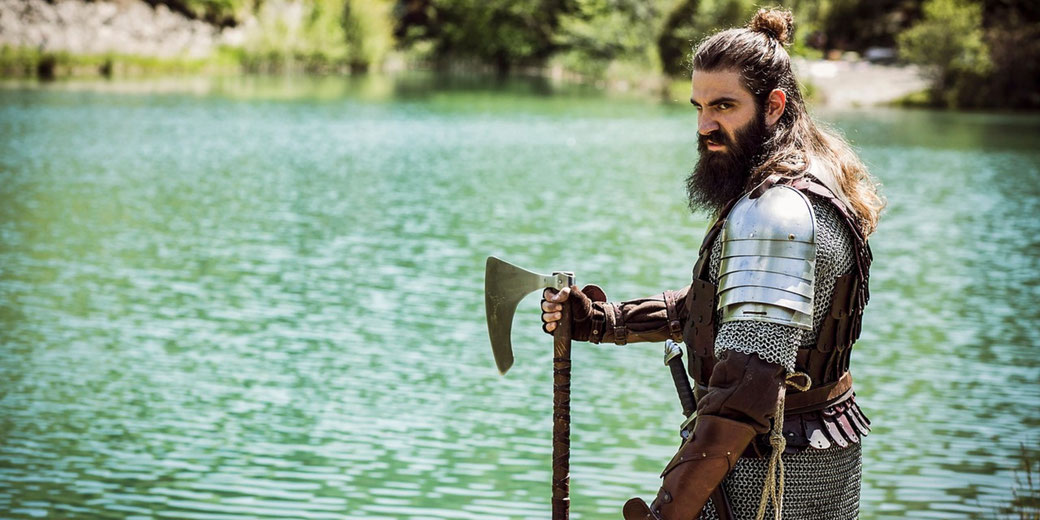
Power in the early medieval world often depended on one's ability to fight, and to win. The warriors who ventured across lands and seas trusted in their arms and armor because these tools both protected them and helped express their identity.
These tools became marks of personal skill valued by warriors and displays of strength that helped unite their group.
How were Viking weapons made?
Viking weapons were forged using iron, which blacksmiths produced by heating bog iron ore in simple clay furnaces.
These ores, found in marshy areas across Scandinavia, were smelted by means of charcoal in small bloomery furnaces to produce usable iron.
The resulting iron bloom was then hammered repeatedly to remove impurities before being worked into blades, spearheads, or axe heads.
While the process was very demanding, it allowed for a steady supply of iron that was sufficient for making most weapons, though high-quality steel was uncommon and costly.
Blades were often made using pattern-welding, a technique used by earlier Germanic smiths, which combined layers of iron and steel that alternated in position to produce stronger and more flexible swords with distinctive ripple patterns.
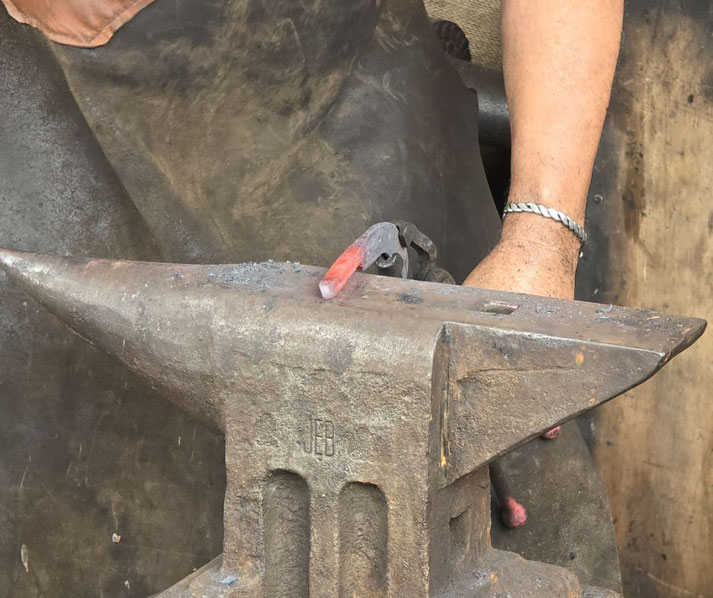
The skill of the blacksmith determined the strength and sharpness of Viking weapons.
Some blades included imported materials, especially those traded from the Frankish Empire, such as the famed Ulfberht swords.
These swords, of which about 170 examples have been discovered and dated between AD 800 and 1000, bore inlaid inscriptions and were made with high-quality steel.
Some of these contained higher carbon content and fewer impurities than local Scandinavian iron.
However, true crucible steel was extremely rare in Europe and likely reached Viking craftsmen through long-distance trade.
Most local weapons, however, used materials that were not as thoroughly purified.
Blacksmiths used basic tools, including anvils, hammers, tongs, and grindstones, to shape and sharpen weapons.
Decorations, such as engraved lines or silver inlay, were added to the most valuable items, especially those belonging to wealthy warriors or chieftains.
The most common Viking weapons
The most widespread Viking weapon was the spear. Spears required less iron than swords and could be used for both thrusting and throwing.
Heads were typically leaf-shaped and varied in length from about twenty to sixty centimetres.
Some had barbs or wings to help catch enemy shields or prevent withdrawal from a wound.
Warriors often carried more than one spear into battle, and they also fought with a wooden shield.
The spear's wooden shaft was usually made from ash, prized for its flexibility and durability.
According to Scandinavian law codes like the Gulaþing, all free men were expected to own such weapons for use in local defence.
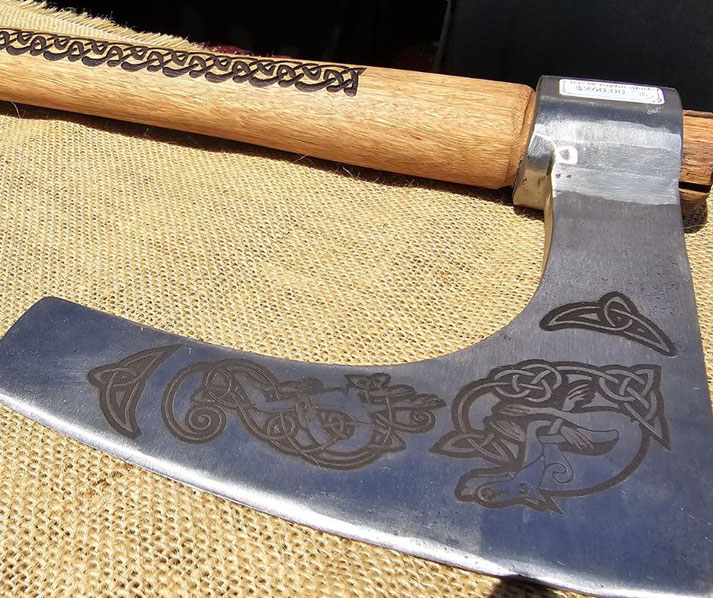
Axes were another popular choice. The Viking axe could range from small hand axes to larger two-handed versions such as the Dane axe, which became especially widely recognised among Danish and Anglo-Scandinavian warriors during the 10th century.
Early axes had broad, crescent-shaped blades, and some featured extended cutting edges for powerful blows.
These weapons could be crafted relatively cheaply and were easily maintained, so they were available to almost all free men.
Swords, in contrast, were rare and prized. They were double-edged, typically about ninety centimetres in length and weighing between one and one-and-a-half kilograms.
Many were passed down through generations. The pommels and hilts were often decorated with silver, bronze, or animal motifs.
In addition to these primary weapons, many Vikings carried seaxes, or long knives, which served both practical and combat purposes.
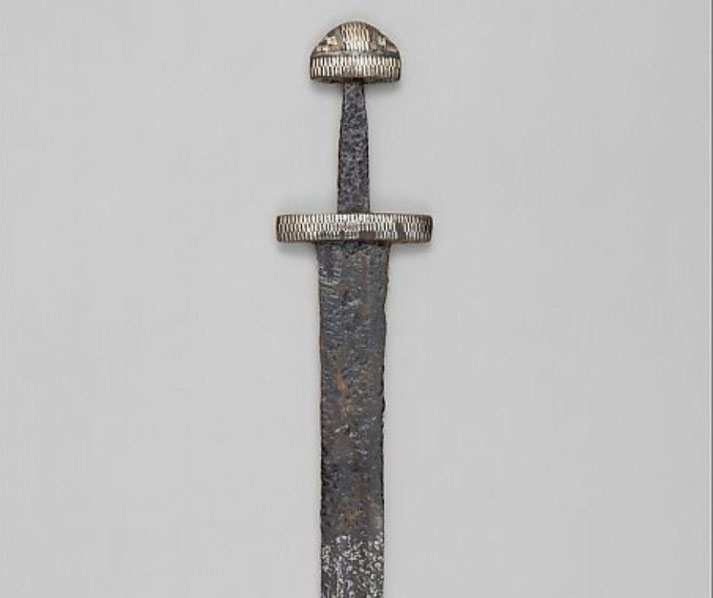
Viking armour
Most Viking warriors protected themselves with round wooden shields, which they held with a central grip behind a metal boss.
These shields were usually made of linden wood, which was light and good at soaking up impact.
They measured about eighty to ninety centimetres in diameter and could be painted or strengthened with metal or leather.
The boss, typically ten to fifteen centimetres wide and made of iron, protected the warrior's hand.
Shields were essential for forming the shield wall, a formation where warriors stood side by side, as they locked shields in order to create a defensive barrier.
This tactic was especially effective during the early stages of battle.
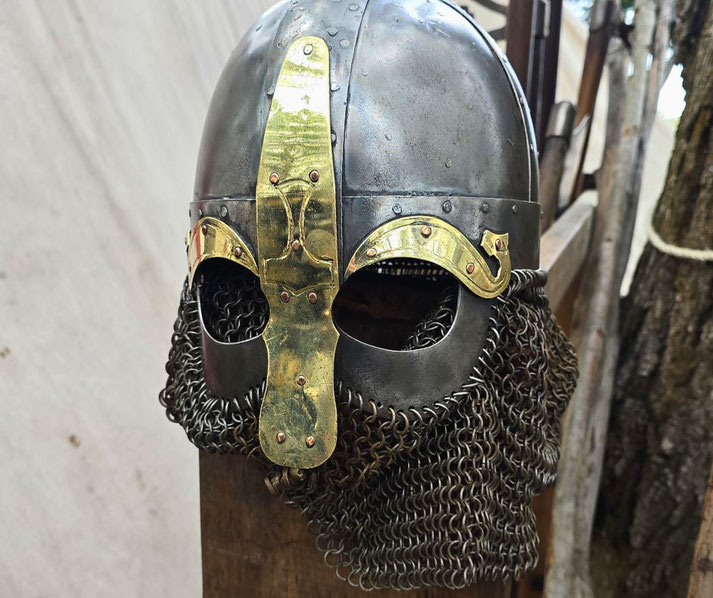
Helmets and body armour were far less common due to cost. Helmets were typically made of iron and covered the top of the head, often with a nose guard, and they did not have the horned decorations often shown in modern pictures.
The popular image of horned Viking helmets stems from 19th-century costume designs, particularly those used in Wagnerian opera.
The few surviving examples, such as the Gjermundbu helmet found in a 10th-century Norwegian burial mound in 1943, indicate that well-made helmets offered solid protection.
Mail shirts were the most advanced form of Viking armour. They were made of thousands of iron rings that had been joined together.
Often, there were between 20,000 and 30,000 in a single shirt, though some modern recreations suggest even higher counts.
These were expensive and time-consuming to produce, so they were generally worn by wealthy warriors or leaders.
Most warriors relied on thick woollen tunics or leather jerkins for some basic protection against cuts and blows.

The importance of weaponry to Viking social status
Weapons in Viking society carried meaning apart from how they were used in battle.
The right to bear arms was a sign of free status. A free man was expected to own and carry a weapon, and to be ready to join his local assembly or fight alongside his community when called upon.
This legal and social expectation created a strong link between owning weapons and a man’s reputation.
For funerals, warriors were often buried with their weapons, particularly swords or spears, as a sign of their social position and the victories they had gained in life.
Prominent examples include the richly furnished graves at Birka in Sweden, where weapons were placed as grave goods.
However, in the famous Oseberg ship burial in Norway, which was likely for high-status women, no weapons were included among the grave goods.
The type and decoration of weapons also was an outward sign of a man's wealth or his reputation among peers.
A simple axe or spear marked a lower-ranking warrior, whereas a sword with silver inlay, a mail coat, or a gilded helmet showed that the warrior belonged to the elite.
Poetry and sagas from the period, such as Egil’s Saga and The Saga of the Jómsvíkings, described the appearance of weapons in detail and praised warriors both for the craftsmanship of their weapons and for the courage they showed when they used them.
Egil Skallagrimsson, for example, was said to have wielded an ancestral sword, which was often mentioned in stories about his actions.
Ownership of fine weapons could elevate a man's reputation and was often central to heroic storytelling in Viking culture.
So, to carry a finely crafted sword or wear mail into battle was to broadcast one's place in society as much as one's readiness to fight.
What do you need help with?
Download ready-to-use digital learning resources
Copyright © History Skills 2014-2025.
Contact via email
With the exception of links to external sites, some historical sources and extracts from specific publications, all content on this website is copyrighted by History Skills. This content may not be copied, republished or redistributed without written permission from the website creator. Please use the Contact page to obtain relevant permission.





